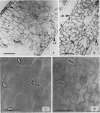Abstract
The growth kinetics of spinach plants (Spinacia oleracea L. cv Savoy) grown at 5°C or 16°C were determined to allow us to compare leaf tissues of the same developmental stage rather than chronological age. The second leaf pairs reached full expansion at a plant age of 32 and 92 days for the 16°C and 5°C plants, respectively. Growth at 5°C resulted in an increased leaf area, dry weight, dry weight per area, and leaf thickness. Despite these changes, pigment content and composition, room temperature in vivo fluorescence, and apparent quantum yield and light-saturated rates of CO2 exchange or O2 evolution were not affected by the growth temperature. Furthermore, 5°C expanded leaves were found to be more resistant to photoinhibition at 5°C than were 16°C expanded leaves. Thus, it is concluded that spinach grown at low temperature is not stressed. However, shifting spinach leaves from 5°C to 16°C or from 16°C to 5°C for 12 days after full leaf expansion had occurred resulted in a 20 to 25% reduction in apparent quantum yields and 50 to 60% reduction in light saturated rates of both CO2 exchange and O2 evolution. This was not accompanied by a change in the pigment content or composition or in the room temperature in vivo fluorescence. It appears that leaf aging during the temperature shift period can account for the reduction in photosynthesis. Comparison of cold-hardened and non-hardened winter rye (Secale cereale L. cv Muskateer) with spinach by in vivo fluorescence indicated that rye is more sensitive to both short term and longer duration temperature shifts than is spinach. Thus, susceptibility to an abrupt temperature shift appears to be species dependent.
Full text
PDF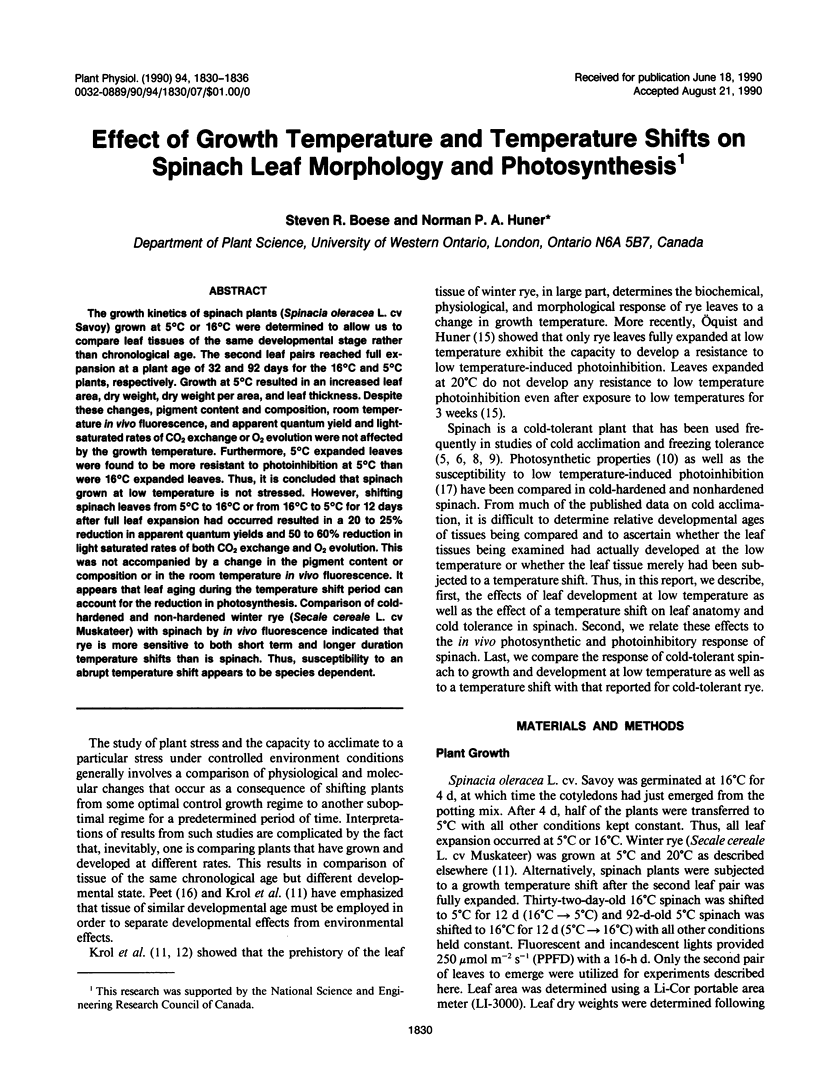
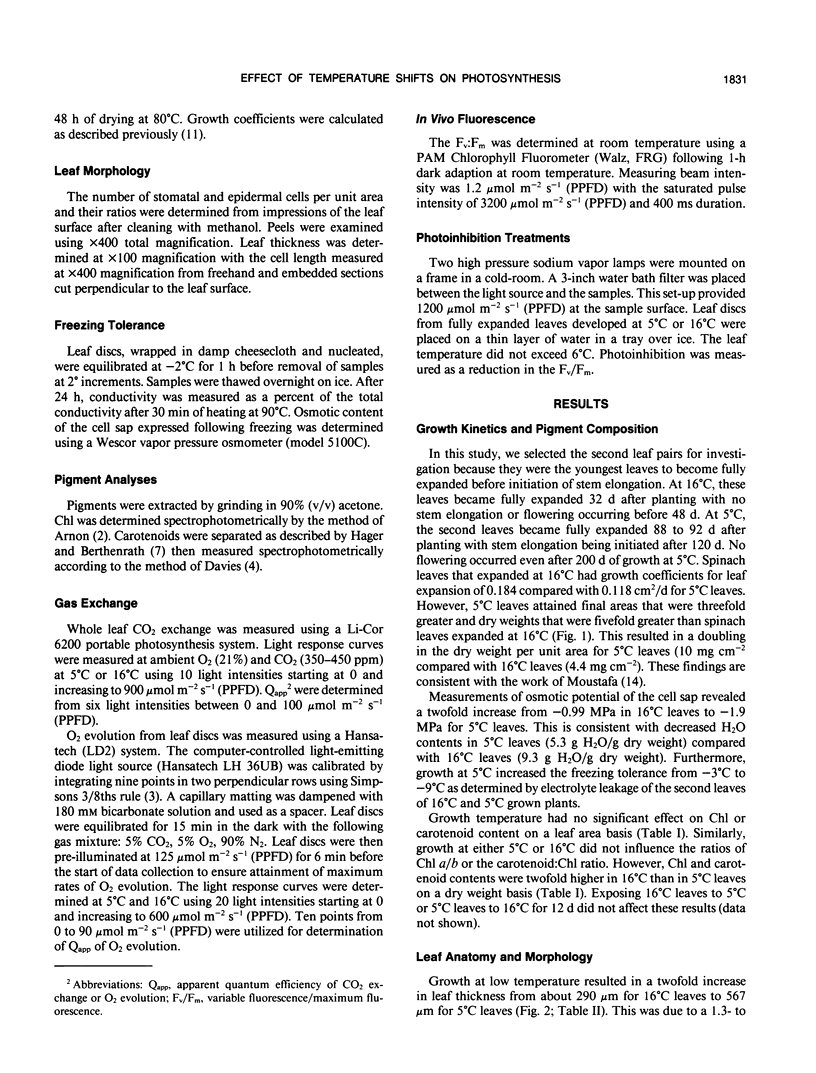
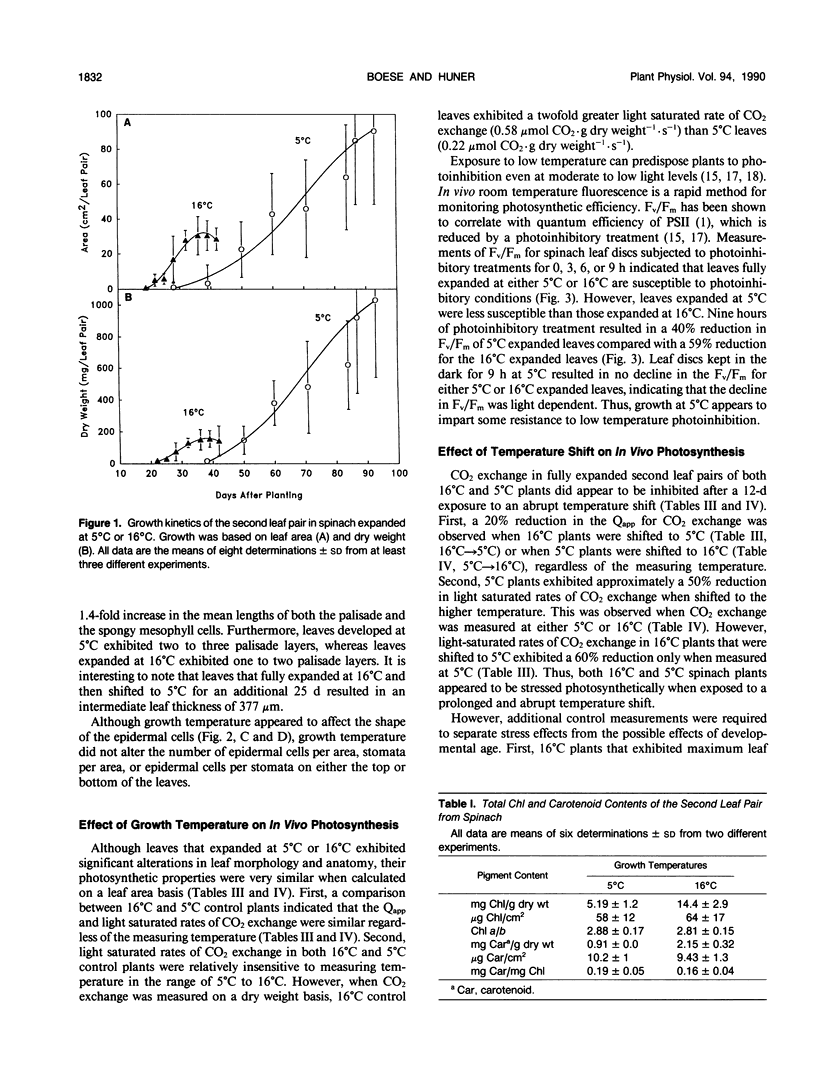
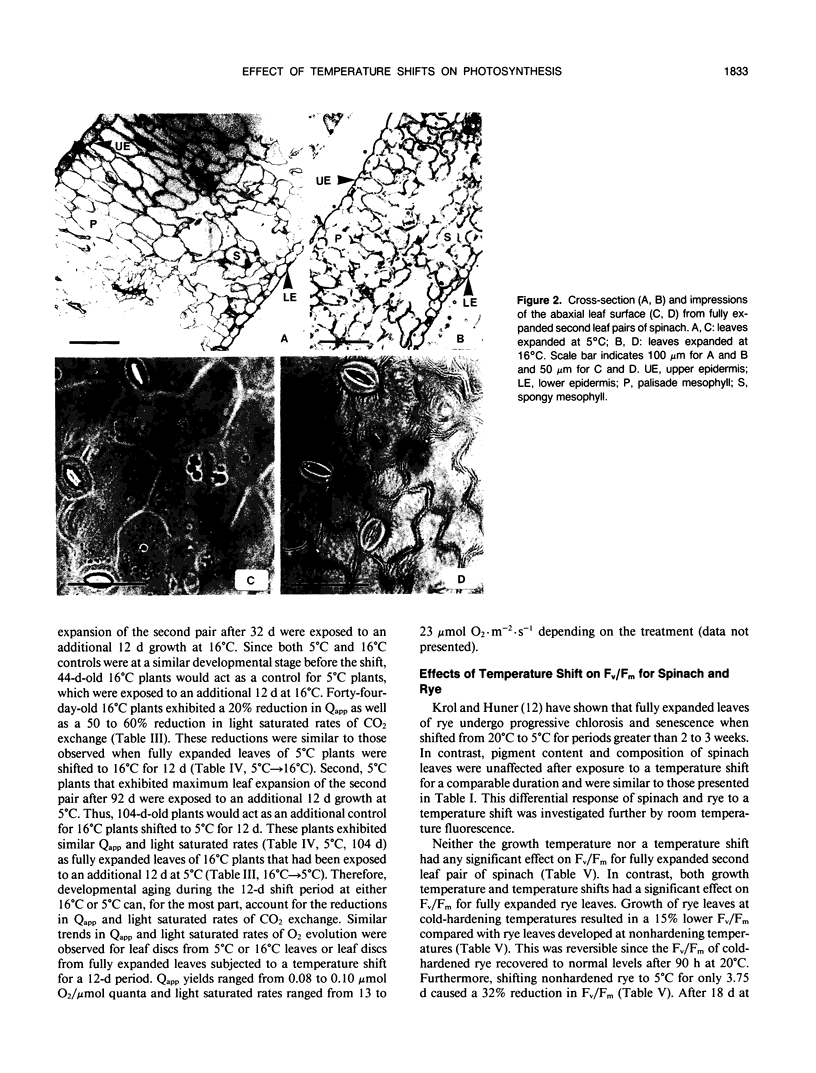
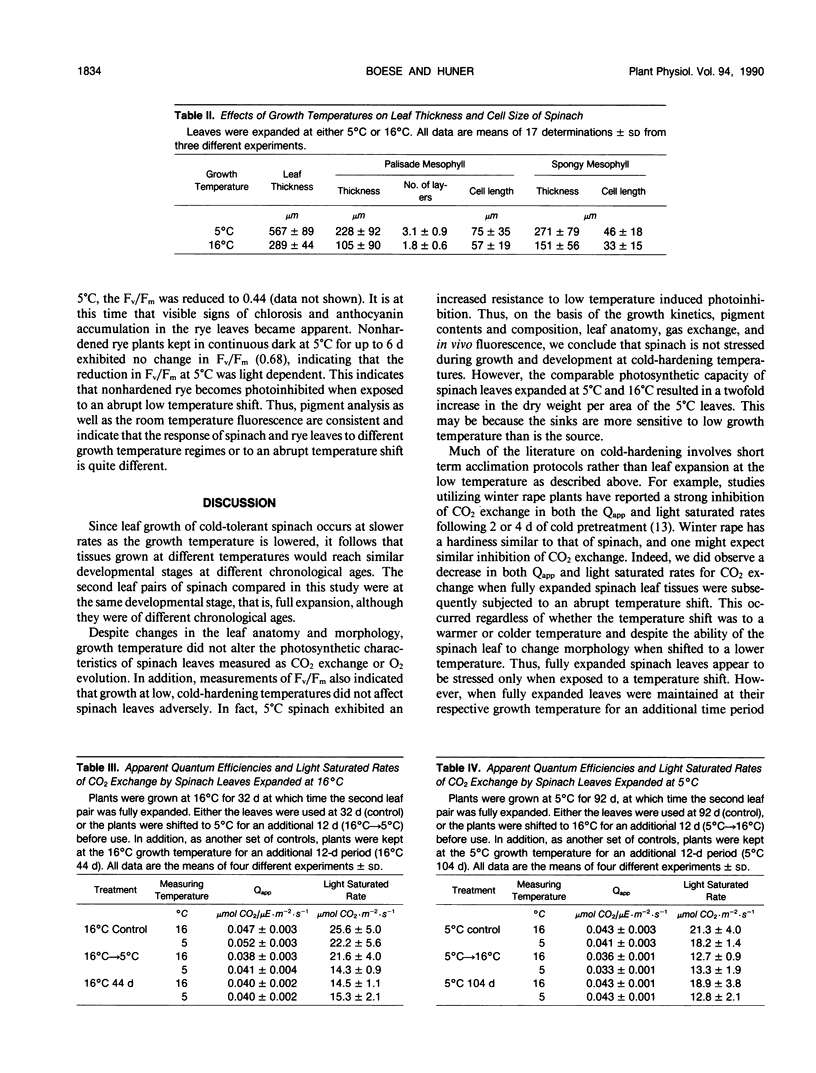
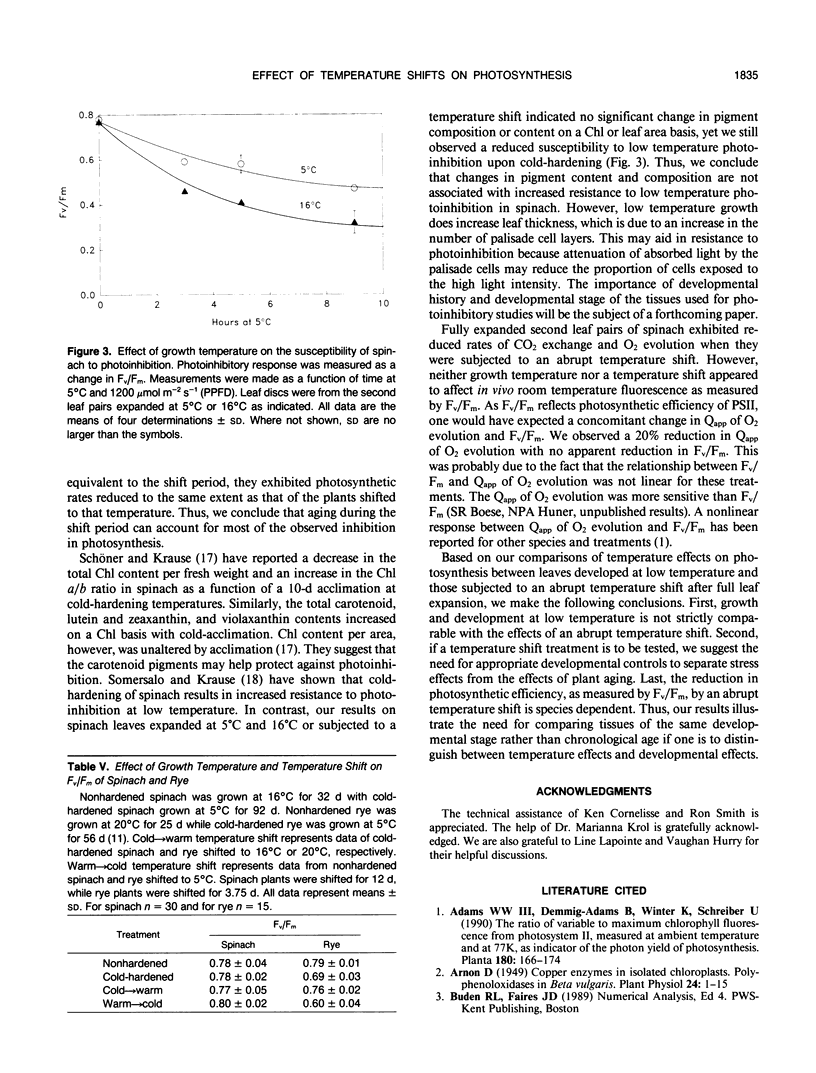
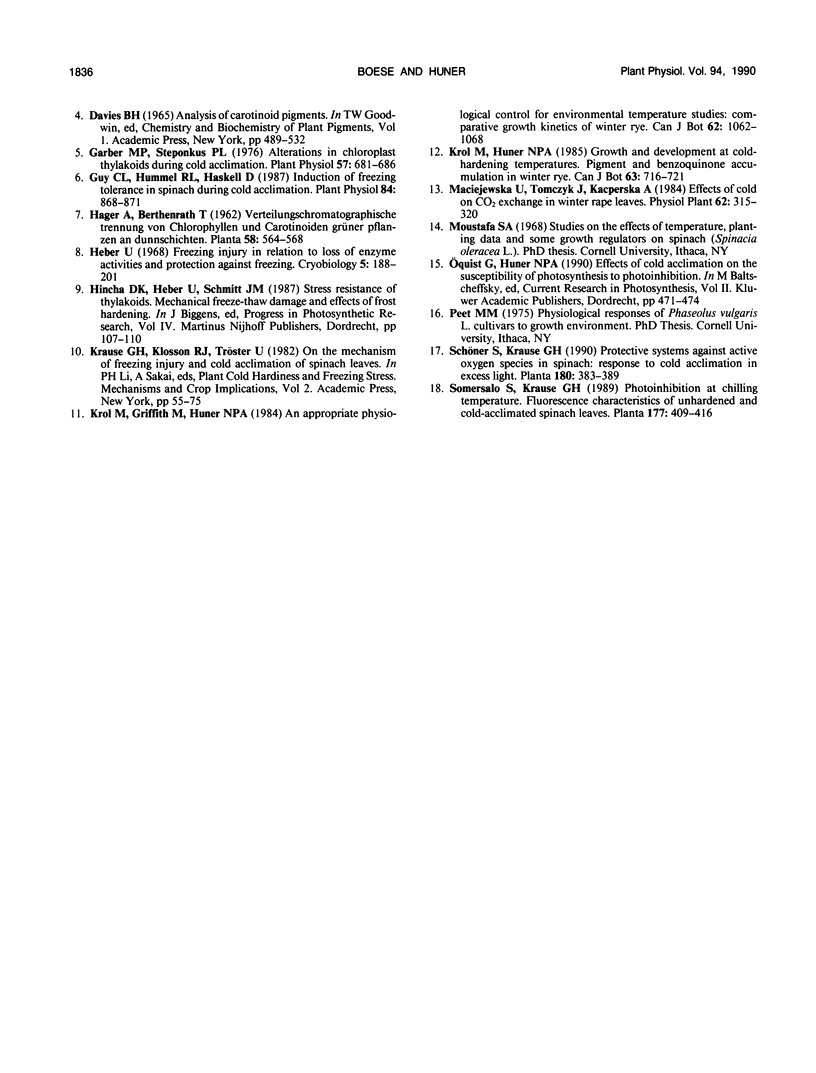
Images in this article
Selected References
These references are in PubMed. This may not be the complete list of references from this article.
- Arnon D. I. COPPER ENZYMES IN ISOLATED CHLOROPLASTS. POLYPHENOLOXIDASE IN BETA VULGARIS. Plant Physiol. 1949 Jan;24(1):1–15. doi: 10.1104/pp.24.1.1. [DOI] [PMC free article] [PubMed] [Google Scholar]
- Garber M. P., Steponkus P. L. Alterations in Chloroplast Thylakoids during Cold Acclimation. Plant Physiol. 1976 May;57(5):681–686. doi: 10.1104/pp.57.5.681. [DOI] [PMC free article] [PubMed] [Google Scholar]
- Guy C. L., Hummel R. L., Haskell D. Induction of Freezing Tolerance in Spinach during Cold Acclimation. Plant Physiol. 1987 Jul;84(3):868–871. doi: 10.1104/pp.84.3.868. [DOI] [PMC free article] [PubMed] [Google Scholar]
- Heber U. Freezing injury in relation to loss of enzyme activities and protection against freezing. Cryobiology. 1968 Nov-Dec;5(3):188–201. doi: 10.1016/s0011-2240(68)80163-4. [DOI] [PubMed] [Google Scholar]



